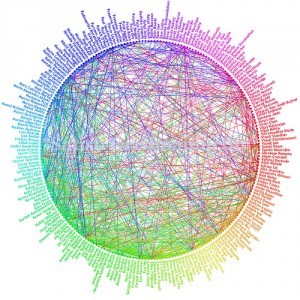Semantic publishing: how to create richer metadata
10 Dec, 10 | by BMJ
Following a previous post on the Semantic Web, this week we’ll be exploring the implications of this web of data for the publishing world. Semantic web technologies, as opposed to the grander idea of the Semantic Web itself, offer tools that can help publishers assemble and distribute their content more efficiently.
What is semantic publishing?
Fundamentally, semantic web publishing refers to information published on the web, accompanied by semantic markup. Semantic publication makes information search and data integration more effective by equipping computers with the ability to understand the structure and even the meaning of the published information. In the Semantic Web, published information is accompanied by metadata describing the information, thereby providing a ‘semantic’ context.

What difference could this make to the publishing world?
Many believe that semantic publishing has the potential to revolutionise scientific publishing. Tim Berners-Lee predicted in 2001 that the Semantic Web “will likely profoundly change the very nature of how scientific knowledge is produced and shared, in ways that we can now barely imagine”. Revisiting the Semantic Web in 2006, he and his colleagues argued that it “could bring about a revolution in how, for example, scientific content is managed throughout its life cycle”. Researchers could directly self-publish their experiment data in ‘semantic’ format on the web and semantic search engines could then make these data widely available.
Creating richer metadata – the technical bit
Metadata is used by most publishers in some capacity. The majority also use taxonomies (a hierarchy of terms used to categorise content), although they might not be aware of this name. The next step towards richer metadata is the use of ontologies. Mimicking the relationship between taxonomies and metadata, ontologies make taxonomies look ‘flat’. Ontologies describe more detailed relationships among concepts and provide a higher level of richness in the metadata.
Taxonomies are very similar to the animal and plant kingdom taxonomies, in which every species is located in a particular branch. However, more conceptual objects don’t always fit so nicely into this basic lineage. If a publisher created a taxonomy based on colours with the following—red, yellow, and blue—as the top nodes, purple would need to be related to both red and blue. In a simple taxonomy, the term ‘purple’ would probably be repeated under both, but in a technical sense they would actually be two distinct nodes that have the same name.
In an ontology, however, purple can be represented as the same concept appearing in multiple nodes on the tree. However, rather than being tree-like, ontologies are a complex mapping of concepts with defined relationships between those concepts (such as ‘subclass of’ or ‘part of’).
In the video below, Louise Tutton, COO at Publishing Technology, talks about the Semantic Web and its opportunities at Online Information, London (30th November).
http://www.youtube.com/watch?v=Ky_JUDWXEDU